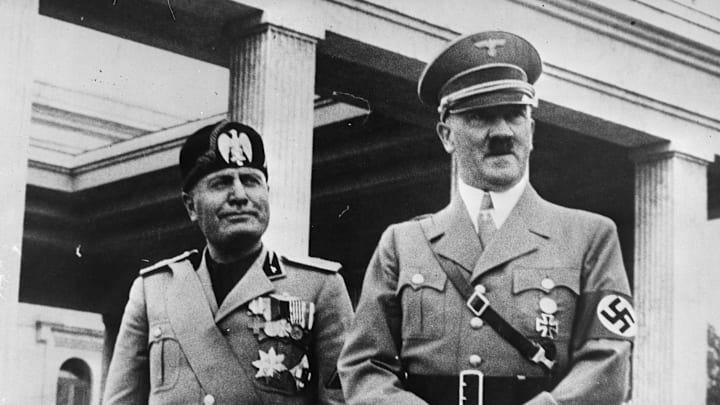Rejection of some current mindset, especially if it is left-leaning
A common trait in nearly every breakdown of fascism is that it is inherently reactionary. It claims to be in direct contrast to a current norm, seeking favor from those who feel they have been hurt by the current system. These are what Stanley G. Payne referred to as the "fascist negations."
In Payne's assessment, fascism poses itself as being anti-liberal and anti-communist, eventually revealing that it is also anti-conservative. Similarly, Umberto Eco categorized it as "the rejection of modernism," Emilio Gentile added the overall "anti-ideological" stance, and both Luis Britto García and Laurence W. Britt emphasized the tendency toward anti-intellectualism.
This strategy worked in two forms. First, it had a built-in audience, as there were always groups who were eager to tear down a system they already hated. But more importantly, it eliminated difference of opinion and the power of truth. As Hannah Arendt noted, "Before mass leaders seize the power to fit reality to their lies, their propaganda is marked by its extreme contempt for facts as such, for in their opinion fact depends entirely on the power of man who can fabricate it."
Rather than present its own ideology, fascism typically starts from the idea that it is different and better than what already exists. The dictator can then tear that down and replace it with themselves. However, García made clear that this is more of a rhetorical stance than an actual value system. In his words, "Fascism does not invent, it recycles. It only believes in yesterday, an imaginary yesterday that never existed." It is not a new, never-seen-before ideology that will change the world. But the fascist leaders will sell it as such for as long as they possibly can.
Creation of an enemy
Ideologically, fascism claims to be distinct from what came before. Similarly, it urges people to see themselves as superior to an enemy, although they are simultaneously in danger from said enemy. This is generally where racism and xenophobia come from. By defining an enemy, fascist leaders create community among their in-group and foster anger and fear to be mobilized when useful.
Scapegoating is hardly a new concept, but it is key to the functioning of a fascist system. The leader picks an enemy from those that people are already suspicious of and begins to dehumanize them. The enemy is actively trying to destroy the "good" people's way of life, and that must be prevented at all costs. This is because the enemy is inherently cruel and means to impose their way of life, which is naturally inferior.
This is a useful strategy and one that has been used throughout history. People who are angry and afraid can be easily directed to violence. But even those who are not angry, if they accept the existence of this enemy, are apathetic toward the suffering that the enemy might face. This allowed entire groups of people to be deported, used as slave labor, or even killed without resistance.
